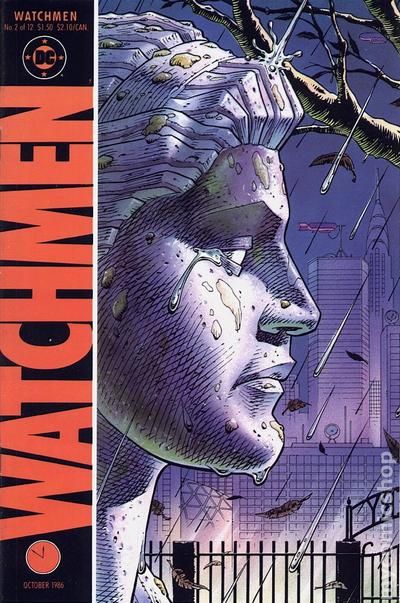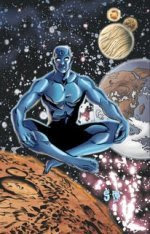
The only time Doctor Manhattan is ever colored differently comes when he changes himself to a much more saturated dark blue as a way of being more presentable for normal people. In action frames and tense moments, Manhattan will also be drawn over a unique jungle green background. In a story where character coloring varies wildly and vibrantly, Doctor Manhattan is always colored and shaded in the same way: the main color being a pearl river blue with highlights of steel blue around the eyes and minimal shading throughout the body done through the black lineart. The most obvious example in Watchmen of color being used to reflect identity is in the character Doctor Manhattan. While the aesthetic of the series is undeniably distinctive and beautiful, is there more to the coloring than what is seen at face value? How does the use of color in Watchmen inform and affect one’s understanding of the overall story and its characters? Where other comics have a largely uniform coloring that mostly adheres to reality, Watchmen (for the purposes of this article, the 2005 recolor) uses colors that are vibrant and diverse, unafraid to bend realism for the sake of the story. When compared to other comics of the era, what often makes Watchmen’s visual identity stand out is its coloring. Despite the series’ acclaim, however, John Higgins’ contributions in coloring are often underrepresented, and rarely does he get the recognition that he deserves (even being left out of the cover credits on the trade paperback edition of the series).

Known for its groundbreaking ideas and unique art style, Watchmen has been the subject of much analysis.


By Tatsuya King - Watchmen (1987), created by Alan Moore, Dave Gibbons, and John Higgins, remains a massively influential comic book series that is widely known as one of the pinnacles of narrative and artistic storytelling in its medium.


 0 kommentar(er)
0 kommentar(er)
